En Plein Cœur de Paris (Right in the Heart of Paris)
 04.13.2011
04.13.2011 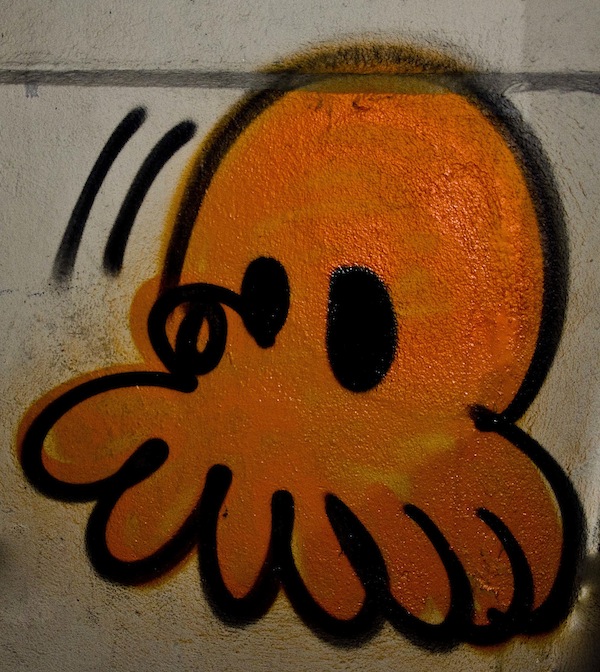
The ingredients: Beauty. A body of water. Culture. Walkability.
A block and a half to the post office. Drop them in the box.
Loop around rue des Écoles and back down rue Pontoise to the gym. It’s Sunday night and closed. But you take an iPhone photo of the schedule taped to the window. Yoga and Cardio and Stretching and Salsa all day.
Cross Blvd. St. Germain and continue down rue Pontoise past a restaurant with tables outside, which looks inviting. But it’s too close, we wanted a longer walk. Rue Pontoise comes out on Quai de la Tournelle, and Voila! it happens again. We emerge along the banks of the Seine in a state of delight. How little it takes to generate happiness. A river. Evening light. Your hand in mine. The statue of Sainte Geneviève in stone rising above the Pont de la Tournelle and the Seine.
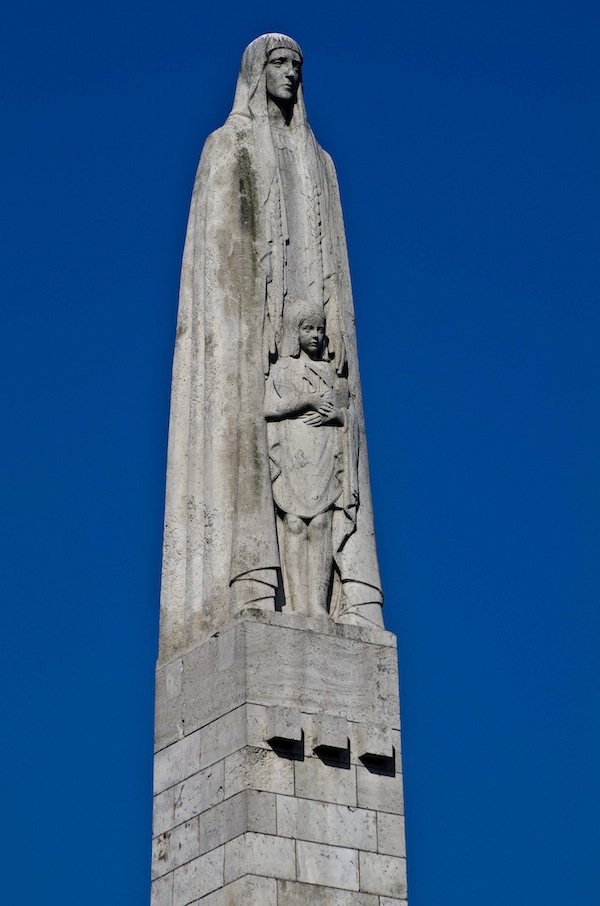
The legend goes that in 451 when word came that Attila and the Huns were about to invade the city, Geneviève held them off with the power of her prayer. And she became the patron saint of Paris. In 1928, the sculptor Paul Landowski was commissioned to sculpt a statue of Sainte Geneviève to rise above this bridge.
“Did I tell you what the sculptor went through with this sculpture?” you say.
“No, tell me!”
“Apparently, Landowski wanted it to face west towards Notre Dame. But the city insisted that it face east as a rebuke to the Germans against whom the French had fought WWI. As a kind of echo of Geneviève’s resistance against the Huns centuries before. You can see who won.”
The statue faces east towards Germany.
“Where did you read that? It wasn’t in the account I read.”
“In Colin Jones’s book, Paris: Biography of a City.”
“It’s 8:00 p.m. and still light. I love these late evenings.”
“And soon it will still be light at 10 p.m.”
We cross the bridge. People are lined up with cameras trying to capture the sun setting behind Notre Dame.
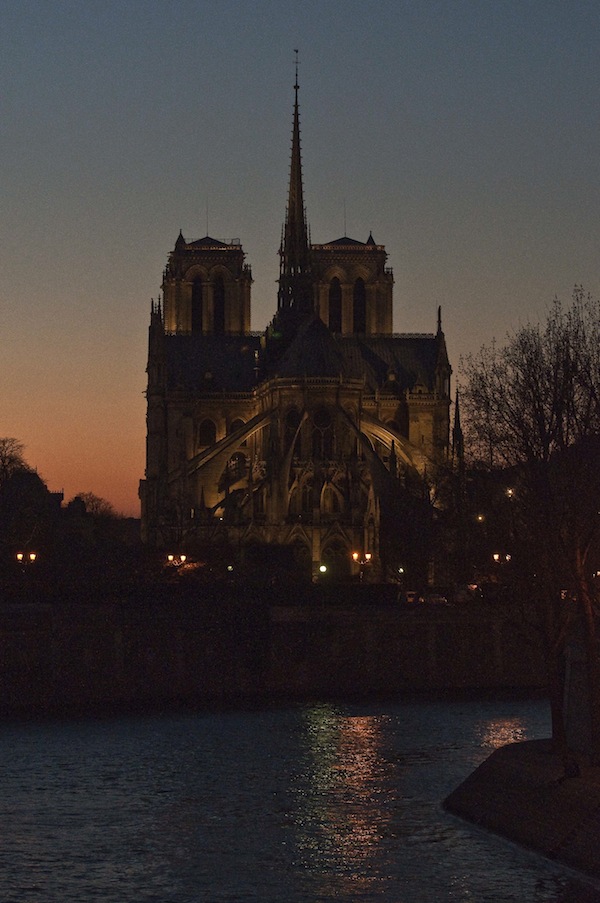
One couple, the woman with legs like sausages, is kissing so intensely I have to watch. The man is gripping her jaw with his hand as if it’s a fish that might slip back into the Seine if he doesn’t hold tight. I love to see hefty middle-aged couples convulsed with passion.
We cross into the central street of l’Île Saint-Louis and pass all the familiar shops and restaurants. One more bridge and we’re in the Marais.
We pass a Jewish temple. A rabbi in a fedora comes out and scolds a couple of young male students. His gestures are classic. He holds up his hands to the sky in helpless dismay, but he speaks fluid French; there’s something dear and funny in this combination of the familiar and the strange. Richard asks, “How do you say “Oy veh” in French?
Men walk by on the other side of the street with tefillin[1] and payot[2].
As we turn onto rue des Francs-Bourgeois, I spot graffiti on a wall that I've never seen, an old-fashioned full-length portrait of a man. "Do you have this one?
"No," you say, and pull your camera from your bag.
"Why does it not surprise me that you just happened to have that camera on you?" I laugh.
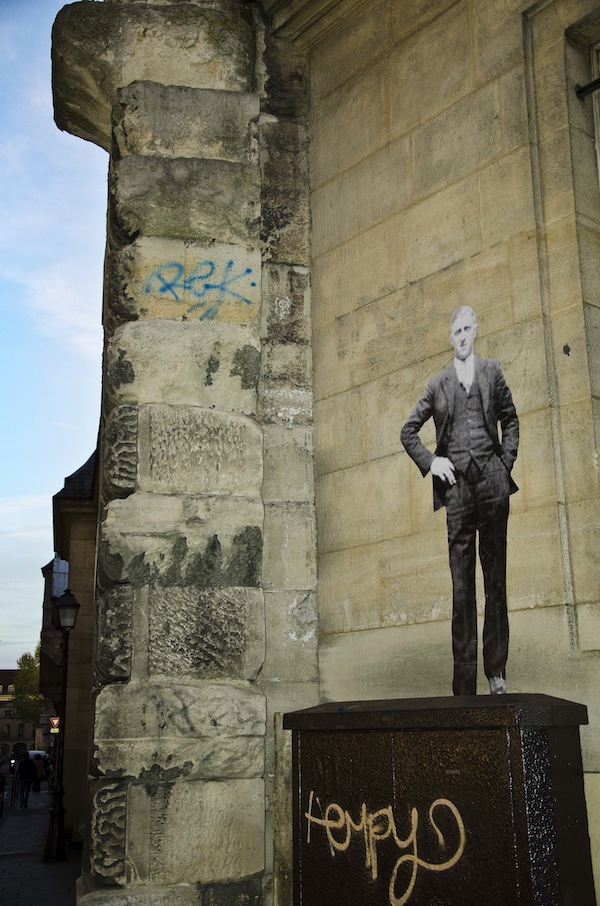
You snap the image from several angles and we continue on. A little lèche-vitrine[3]. Here’s a long dress in a shop window. I don’t wear long summer dresses, but this one I like.
“What do you think?” I ask.
“Nope. It’s not you.”
That’s all I need to hear.
I hoped there would be an empty table outside. There’s a slight breeze but the air is warm. We don’t want to eat indoors. And there is, in the corner against that ancient wall. We sit across from each other, one table away from a young French couple, who, like most French people, modulate their voices so that you can talk without the conversations of others distracting you.
Foiled in our last attempt to have galettes, tonight there are no obstacles. We’re radiating joy and the waitress feels it, comes up to our table and smiles and laughs!
I’d forgotten that they have galettes with goat cheese here, which is better for me than cow’s cheese. And more important, is delicious.
You look flustered. Too many great choices; what will you have?
The waitress laughs. She’s small and dark-haired and possibly Middle Eastern. She takes our orders and comes back with a big bottle of Pellegrino, pours it for the two of us.
“I have to tell you one thing about you that I really love.”
You raise your eyebrows. Moi?
“You. I know how hard these first two weeks of French classes have been. I think four hours of instruction in a new language are the equivalent of eight hours of work at anything else.”
You nod in agreement.
“What moves me is the way you put your whole heart, mind, body and soul into learning something new. Your wholeheartedness—you approach everything that matters to you that way.”
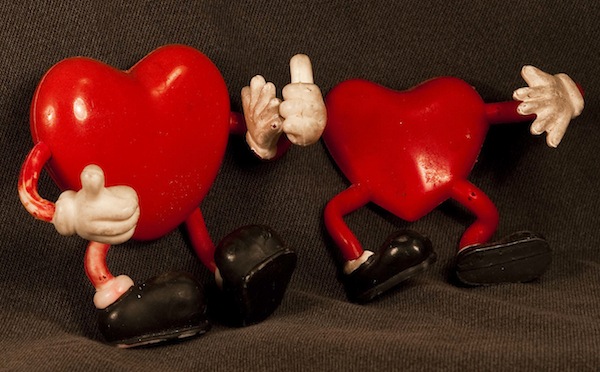
You nod.
“The way you disappeared into your office all day Saturday memorizing pronouns and articles, and then practiced them later with me. Really, the French language doesn’t have a chance against you. You will master her. Just like Sainte Geneviève conquered the Huns by her attitude alone!”
You laugh. The galettes arrive. “Bon appetit!” The waitress sings, and swings away to the next table. We hold hands above the meal, thank the goddess Demeter for this food that smells so good we have to cut short our thanks and demonstrate our gratitude by quickly digging in.
“Ohhhh.”
“Ohhhh,” you echo.
“No, this is the best place for galettes in town.”
“I have to agree. And this one has goat cheese, which I haven’t found anywhere else. I’d offer you a bite but it’s too good.”
“You can’t have a bite of mine either.”
“I wouldn’t want one, with all that boeuf on it.”
We eat, sighing. “I passed a men’s shop on St. Germain with the perfect black linen jacket for you in the window. That is, if you want one.”
“Let’s go by after dinner and take a look.”
After dinner, we cross the street and Voila! there’s a graffiti image that I hope is… “What do you think that is,” I ask.
“An octopus,” you say.
“I could use that image,” I say. You photograph it, and then as we walk down rue des Francs-Bourgeois, there is another, in orange. And then another green one. You photograph each.
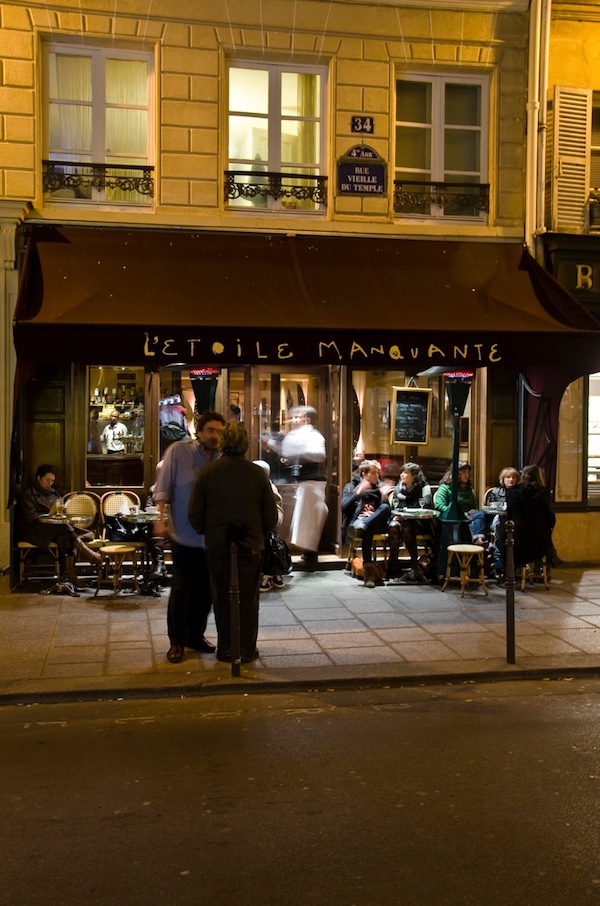 The Missing Star
The Missing Star
The restaurants we pass are all wide open now to the street. Many are full of men with men, in groups, in couples, and standing in front of the restaurants, hunting. And very tall, thin black men who look like models, walking arm in arm in the street.
We cross in front of the Hôtel de Ville de Paris. To the right is a long fountain and a carrousel, to the left, the magnificent ancient building.
“Look at the light behind that statue.”
We look, then glance at each other. No words are needed. The joy on your face mirrors what I feel.
Through the Place du Parvis-Notre-Dame, the square in front of Notre Dame. Boys are tossing up a toy lightning bug, which twinkles in the church’s dramatic lights.
Tourists eat ice cream. A Russian family crosses our path.
A girl is draped across a boy’s lap; they’re kissing. The beauty of this city brings out romance.
We look for the jacket, but the shop must be farther up St. Germain. You’ll pass it tomorrow on the way to school.
The secrets of the magic of this city: beauty, the river, the culture, but most of all, that you can walk everywhere. If we were meant to drive every day, we’d have been born with wheels on our feet.
[1] From Ancient Greek phylacterion, form of phylássein, φυλάσσειν meaning "to guard, protect"), are a set of small cubic leather boxes painted black, containing scrolls of parchment inscribed with verses from the Torah, with leather straps dyed black on one side, and worn by observant Jews during weekday morning prayers.
[2] Payot (also peyot, payos, payess, peyess, peyos Hebrew: singular, פֵּאָה; plural, פֵּאוֹת At Yemeni jewish it is called 'Simonim' too סִימָנִים) is the Hebrew word for sidelocks or sidecurls. Payot are worn by some men and boys in the Orthodox Jewish community based on an interpretation of the Biblical injunction against shaving the "corners" of one's head. Literally, pe'ah means corner, side or edge.
[3] Window-shopping. Literally, “licking the windows.”

